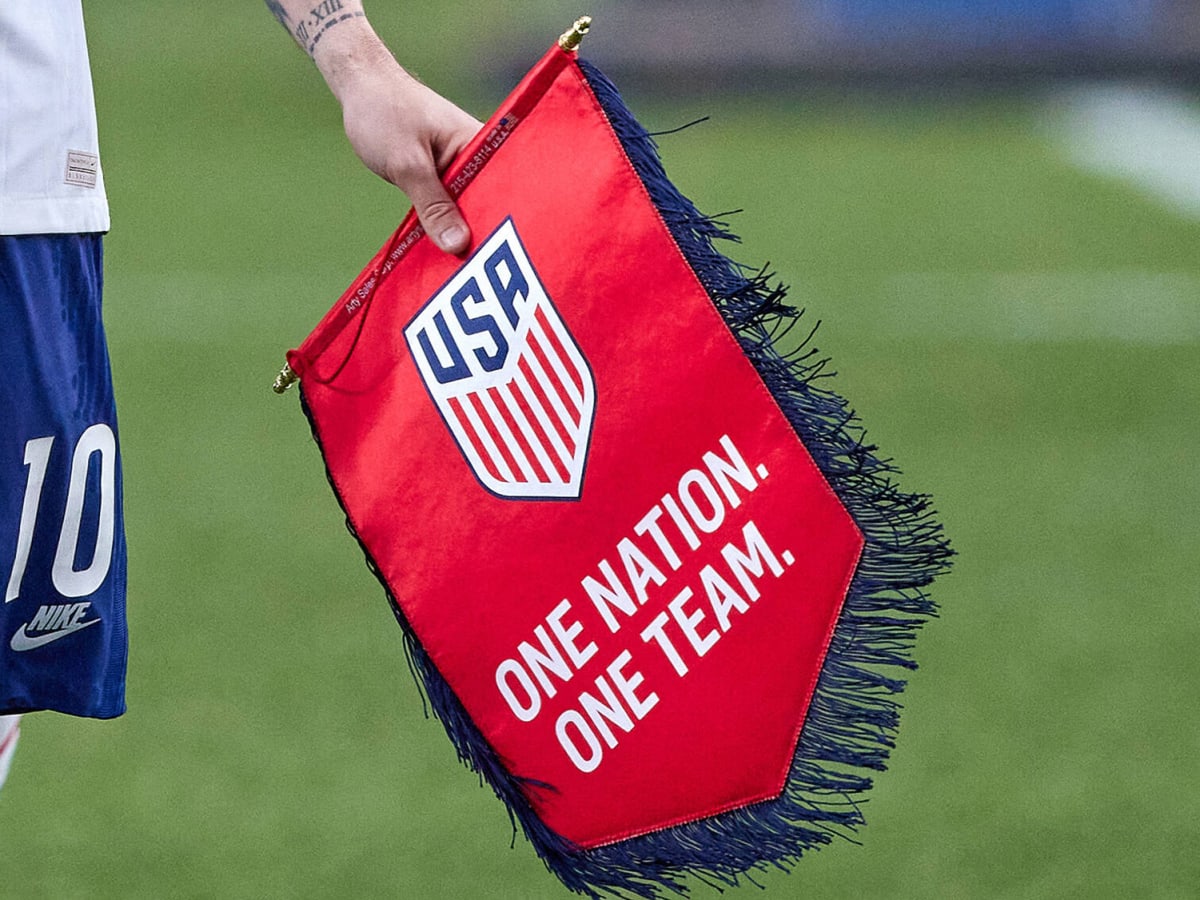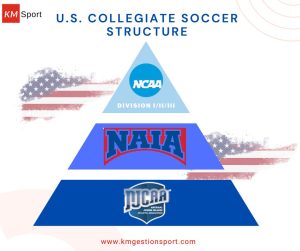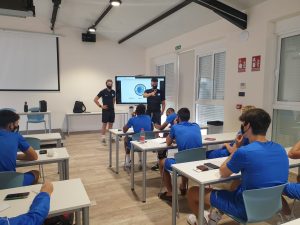The landscape of U.S. collegiate soccer in the United States offers unique opportunities for young athletes to pursue higher education while developing their athletic skills at a competitive level. Understanding the structure of different U.S. collegiate soccer leagues, the availability of sports scholarships, and the requirements for player eligibility are crucial for any aspiring soccer player. This detailed guide will provide insights into the organization of American university soccer, the various leagues, how each one operates, and what players need to do to gain access both academically and athletically.
Understanding U.S. Collegiate Soccer Structure
U.S. Collegiate soccer in the United States is primarily organized through several governing bodies, with the National Collegiate Athletic Association (NCAA) being the most prominent. Other organizations include the National Association of Intercollegiate Athletics (NAIA) and the National Junior College Athletic Association (NJCAA). Each body governs its leagues and tournaments, setting eligibility rules and competitive standards.
National Collegiate Athletic Association (NCAA)
NCAA Divisions
- Division I: This is the top tier of NCAA soccer, featuring universities with larger budgets, more advanced athletic facilities, and highly competitive teams. Players in this division are often aiming for professional careers post-college.
- Division II: Offers a balance between academics, athletics, and extracurricular activities. Scholarships are available but more limited than in Division I.
- Division III: Emphasizes the overall U.S. collegiate experience without the intense focus on sports seen in the higher divisions. Scholarships based on athletic performance are not offered in Division III, though financial aid and academic scholarships are available.
National Association of Intercollegiate Athletics (NAIA)
The NAIA is another significant organization for college sports, including soccer. It offers an alternative to the NCAA, providing more flexibility in eligibility, which can be beneficial for international students or late bloomers in the sport.
National Junior College Athletic Association (NJCAA)
The NJCAA provides community colleges with athletic programs, serving as a stepping stone for players who need more development time or academic preparation before moving to four-year universities.
Soccer Leagues and Their Structure
Each governing body organizes competitions differently:
- NCAA: The soccer season culminates in the College Cup, a tournament held in December where teams compete based on geographic conference alignments during the regular season.
- NAIA: Similar to the NCAA but typically features smaller schools. The NAIA hosts its national championship tournament, which includes teams that win their respective conferences or receive at-large bids.
- NJCAA: Focuses more on regional competition, with national championships held at the end of the season for qualifying teams.
Athletic Scholarships in U.S. Collegiate Soccer
Types of Scholarships
- Athletic Scholarships: Available primarily in NCAA Division I and II and NAIA schools, covering tuition, room, board, and sometimes books. The amount can vary widely based on the player’s skill level and the team’s budget.
- Academic Scholarships: Offered across all divisions based on the student’s academic merits rather than athletic capabilities.
Securing Scholarships
- Recruitment Process: To be considered for a scholarship, players typically need to be scouted or recruited by college coaches. This often involves showcasing skills in high school matches, club teams, or participating in showcases and tournaments.
- Contacting Coaches: Proactively reaching out to college coaches with a sports resume and highlight video can improve visibility and increase scholarship opportunities.
Academic and Athletic Preparation for Aspiring Collegiate Soccer Players
Academic Requirements
- NCAA Eligibility Center: All players hoping to compete in NCAA Division I or II must register with the NCAA Eligibility Center to verify academic and amateur status.
- Standardized Tests: SAT or ACT scores are required for most universities, and maintaining a strong GPA is crucial.
Athletic Preparation
- Skills Development: Players should focus on refining their technical skills, tactical understanding, and physical fitness.
- Playing Experience: Competitive experience at the high school or club level is essential. Participation in district, state, or national level competitions can provide valuable exposure.
Crafting the Ideal Athletic Profile for U.S. Collegiate Soccer Scholarships
Securing a soccer scholarship to a U.S. college is a highly competitive process that requires more than just exceptional playing skills. Aspiring student-athletes must also prepare an impressive athletic profile that highlights their abilities, experiences, and potential to catch the eye of college recruiters. This detailed guide will walk you through the steps necessary to create an athletic profile that stands out, enhancing your chances of securing a sports scholarship. Kmsport agency can help you to create your career in USA. Apply Now!
Understanding the Importance of an Athletic Profile
An athletic profile, or sports resume, is crucial in the recruitment process for U.S. collegiate soccer. It provides college coaches with a snapshot of who you are as an athlete and what you can bring to their program. The goal is to make your application as attractive as possible, demonstrating not only your skills and accomplishments but also your potential for growth and contribution to the team.
Key Components of an Athletic Profile
Personal Information
- Contact Details: Full name, address, phone number, and email.
- Academic Information: Current high school, grade, GPA, and expected graduation date.
- Eligibility Information: NCAA Eligibility Center ID if applicable.
Athletic Achievements
- Playing Experience: List all clubs, high school teams, or district/regional teams you have played for, including the positions held and the years played.
- Key Statistics: Include relevant statistics such as goals scored, assists, minutes played, and any defensive records if applicable. Be specific and use figures to quantify your contributions.
- Awards and Honors: Any recognitions you have received, such as MVP awards, all-star team selections, or tournament honors.
Coach References
- Recommendations: Include the names and contact information of coaches or trainers who can vouch for your abilities and character. These references should be able to provide detailed insights into your skills, work ethic, and team contribution.
Physical Attributes
- Physique: Height, weight, and any other physical attributes that might be relevant to your position and level of play.
- Fitness Levels: Information about your fitness regime, including any athletic benchmarks like sprint times, endurance capabilities, or strength measurements.
Creating a High-Quality Highlight Reel
A highlight reel is an essential tool in your athletic profile. It provides visual proof of your skills and should be tailored to showcase your best moments on the pitch.
Content Selection
- Showcase Versatility: Include clips that show a range of skills—scoring, defending, passing, and tactical awareness.
- Game Situations: Display your abilities in various game situations such as open play, set pieces, and under pressure.
Video Quality
- High Resolution: Ensure the video is in high definition to allow clear visibility of your actions on the field.
- Professional Editing: Use simple editing tools to highlight yourself before plays to help coaches follow your movements.
Duration and Format
- Length: Aim for a video of 3-5 minutes. Long enough to showcase your abilities, but concise enough to keep the viewer engaged.
- Narrative Flow: Arrange clips in a logical order that tells a story of your playing style and strengths.
Including Additional Information
Academic Achievements
- Balanced Profile: Besides athletic prowess, include your academic strengths to show you’re a well-rounded candidate.
- Test Scores: SAT or ACT scores if available, as they are often prerequisites for admission.
Personal Statement
- Goals and Aspirations: A brief statement about your sports career goals and why you are interested in competing in U.S. collegiate soccer.
- Personal Qualities: Mention characteristics that make you a valuable team player—leadership qualities, resilience, and a positive attitude.
Regular Updates
- Keep It Current: Regularly update your profile with new achievements, improved stats, or additional references as your high school career progresses.
- Stay Relevant: Tailor your profile based on feedback from coaches or after significant tournaments where your playing style or skills may have evolved.
Recruitment Materials
- Highlight Reel: A well-edited compilation of gameplay that showcases a player’s skills, understanding of the game, and athletic ability. You can watch some of our players on Instagram
- Sports CV: Includes academic achievements, soccer accolades, coach references, and personal statistics like height, weight, and playing position. We can help you to build a strong CV.
Navigating the world of U.S. collegiate soccer involves understanding the organizational structure of leagues, the types of available scholarships, and the academic and athletic preparations necessary for success. For ambitious young soccer players, the journey is demanding but can lead to immense opportunities both on and off the field. By strategically preparing and understanding the recruitment landscape, players can maximize their potential for securing athletic scholarships and succeeding in U.S. collegiate soccer. Click here to read more detaimls about scholarships in USA.






0 Comments